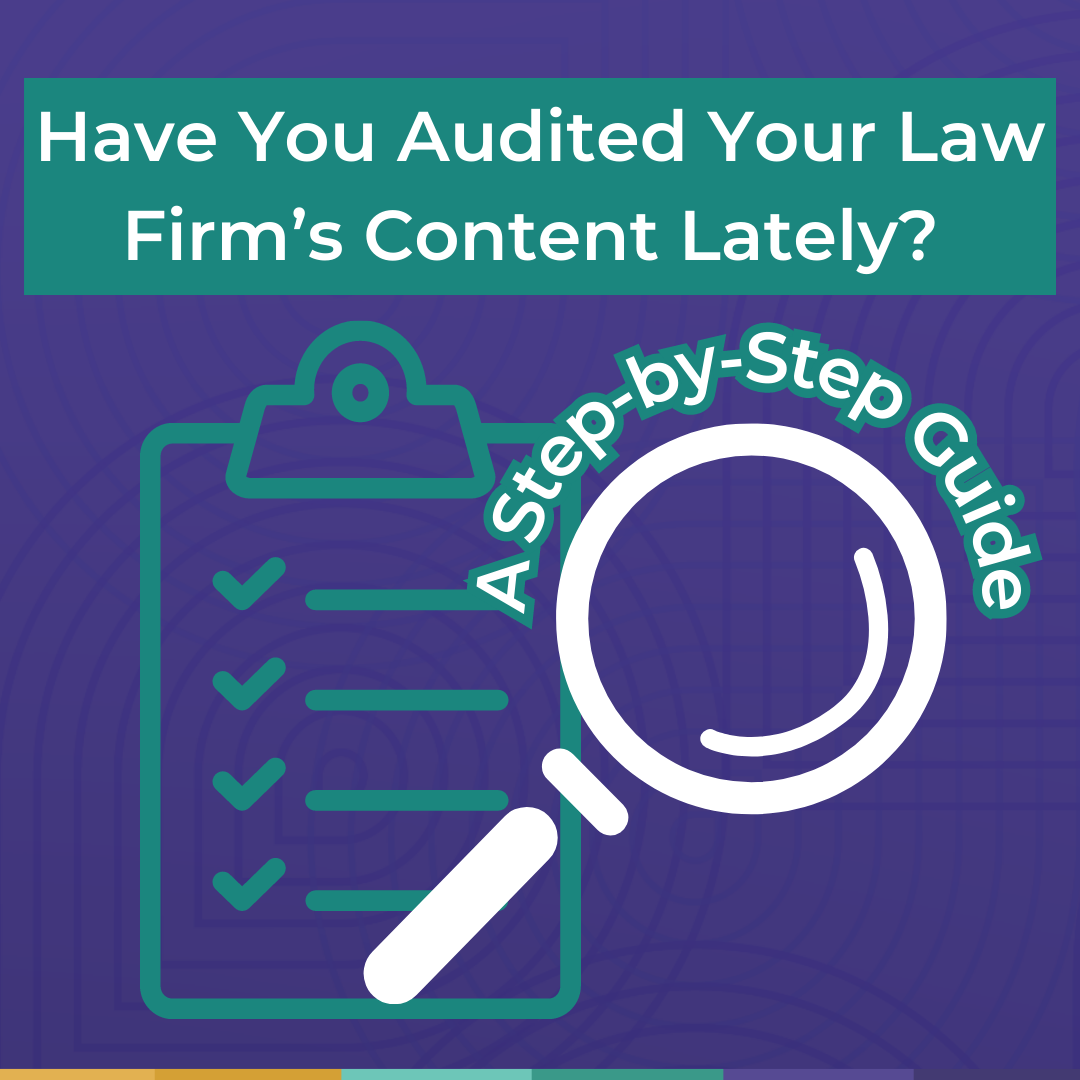Content Marketing, Part 1: Have You Audited Your Law Firm’s Content Lately? A Step-by-Step Guide
By Leslie Richards and Jennifer Simpson Carr
Content creation is part of doing business today. Effective content – whether that is website content, thought leadership, webinars, etc. – contributes to a strong digital presence that supports business development and brand awareness.
A law firm’s online content is one of the primary means through which a firm and its attorneys can engage with prospective clients. With nearly 80% of the decision-making process of prospective buyers of legal services conducted online, effective content is key, and your website is your most important content hub.
Unfortunately, for many firms, content creation is a heavy lift. It requires time that attorneys would prefer to spend on client work. As a result, the production of thought leadership content is often slow. In-house teams wear many hats, and website content projects handled in-house often require a significant amount of time and resources. For this reason and many others, making sure your content efforts are productive and efficient is paramount.
A content audit is the process of tracking, reviewing and analyzing content to determine what’s working, what’s not, and what needs to be improved. It is the first important step in making your content a true business asset.
In this article, we discuss the importance of a content audit and how to conduct one effectively.
Start with Why
Simply put, a content audit will help law firms identify gaps in content, and understand which content is engaging audiences and which content is leaving them cold. Content audits help you make content creation more targeted and effective. Analyzing your content performance will help you improve user experience (UX) and website page engagement. If conducted in conjunction with a search engine optimization strategy (SEO), effective content can also increase your visibility in online search.
Consider When
There are many reasons to conduct a content audit. Here are some of the most common ones:
- Your firm is ready to do a website redesign
- You are launching a new practice area or are seeking to expand an existing one
- You have a new industry focus
- You would like to optimize your site for Google search results
- You would like your website to be a more effective business development tool
How to Conduct a Content Audit
- Take inventory: The first step in conducting a content audit is to create an inventory of the content on your website to determine its quality, relevance, and effectiveness.
The inventory process includes answering the following questions:
-
- Is the content accurate and up-to-date?
- Is it relevant to your target audience(s)?
- Does it support your law firm’s business goals?
- Is it easy to read and understand?
- Is the author (or authors) still employed at your firm?
- Does the page have a call to action?
- What are the current metrics for the page (number of visits to the page, length of time spent on the page, etc.)
- Does the page need photos?
- Do all the links on the page still work?
- Categorize: Once you’ve analyzed your content, categorize it based on its quality, relevance, and effectiveness using the following categories:
-
- Industry focus
- Practice area focus
- Audience
- Keep: Content that is high-quality, relevant, and effective.
- Update: Content that is outdated or needs to be improved.
- Remove: Content that is low-quality, irrelevant, or ineffective.
- Make a plan: Once you’ve categorized your content, create an action plan to address each category. For example, you may decide to update or remove content that does not support your firm’s business goals, or is not sufficiently focused on a specific audience. You may also decide to create new content to fill gaps. For example, content from a key practice or industry group that has outdated content, or timely content related to changes in the law and how those changes impact your firm’s clients. Identify gaps including:
-
- practice or industry groups with outdated content
- lawyers with little or no content
- timely content related to changes in the law and how those changes impact your firm’s clients
- other gaps specific to your law firm’s business goals
- Take action: Implement your plan by updating or removing content, creating new content, and improving the overall user experience of your website. See our website content audit spreadsheet for help organizing your content review.
-
- Next step: _____________________________________
- Next step: _____________________________________
- Next step: _____________________________________
- Create valuable content: Valuable content will engage your target audience(s), build brand awareness, and generate interest in your law firm and its services.
-
- By having a clear idea of existing content, and repurposing or refreshing where possible, you will ensure that your efforts are most productive when creating new content.
By conducting a strategic content audit, your law firm can maintain a website that supports your business goals, and make sure there is return on the investment in content creation.
For more information on content creation, see our 3-part series:
Content Marketing, Part 1: Have You Audited Your Law Firm’s Content Lately? A Step-by-Step Guide
Content Marketing, Part 2: Are You Creating Valuable Content? A Checklist for Law Firms

